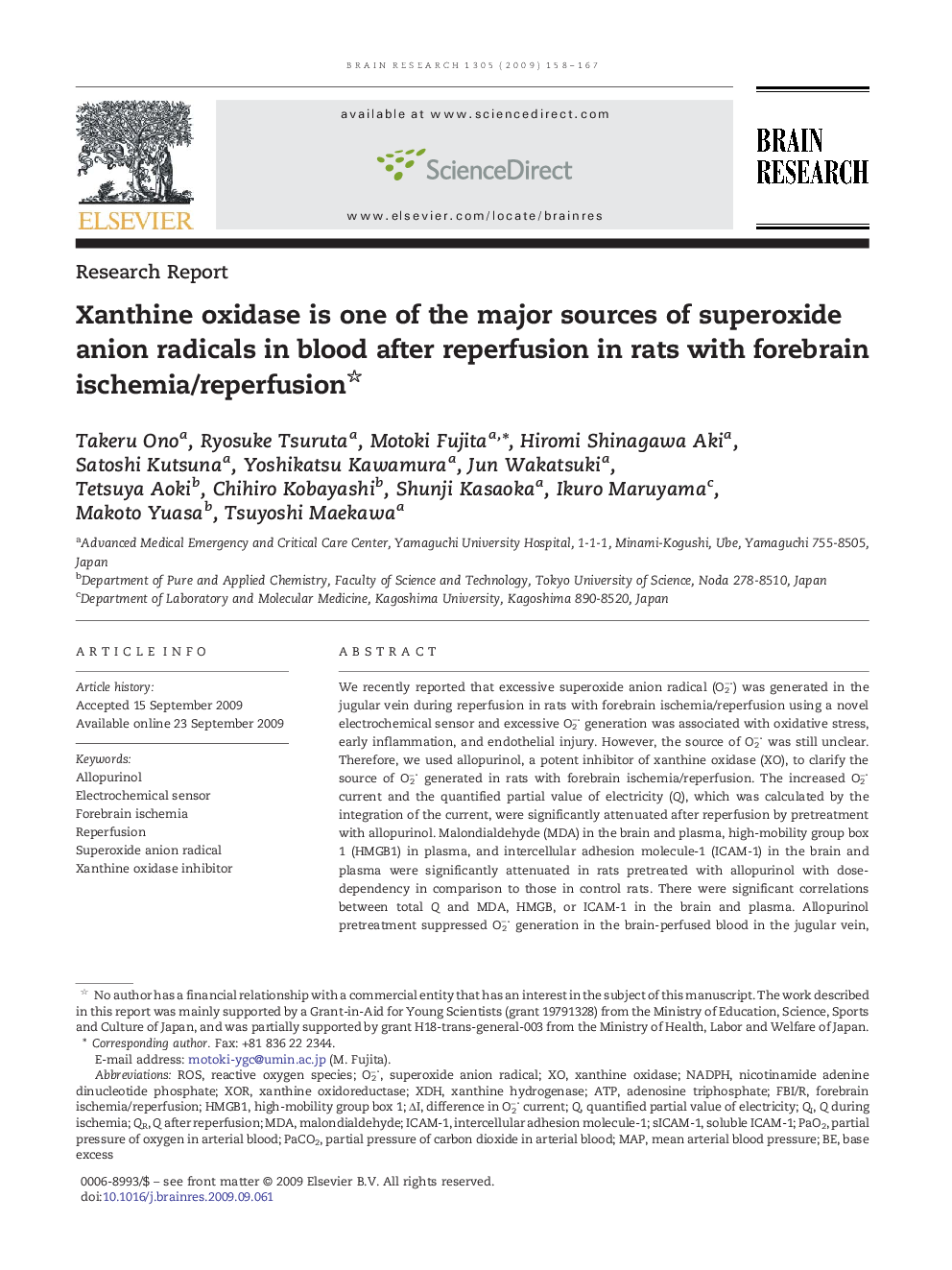| کد مقاله | کد نشریه | سال انتشار | مقاله انگلیسی | نسخه تمام متن |
|---|---|---|---|---|
| 4327673 | 1614134 | 2009 | 10 صفحه PDF | دانلود رایگان |

We recently reported that excessive superoxide anion radical (O2−) was generated in the jugular vein during reperfusion in rats with forebrain ischemia/reperfusion using a novel electrochemical sensor and excessive O2− generation was associated with oxidative stress, early inflammation, and endothelial injury. However, the source of O2− was still unclear. Therefore, we used allopurinol, a potent inhibitor of xanthine oxidase (XO), to clarify the source of O2− generated in rats with forebrain ischemia/reperfusion. The increased O2− current and the quantified partial value of electricity (Q), which was calculated by the integration of the current, were significantly attenuated after reperfusion by pretreatment with allopurinol. Malondialdehyde (MDA) in the brain and plasma, high-mobility group box 1 (HMGB1) in plasma, and intercellular adhesion molecule-1 (ICAM-1) in the brain and plasma were significantly attenuated in rats pretreated with allopurinol with dose-dependency in comparison to those in control rats. There were significant correlations between total Q and MDA, HMGB, or ICAM-1 in the brain and plasma. Allopurinol pretreatment suppressed O2− generation in the brain-perfused blood in the jugular vein, and oxidative stress, early inflammation, and endothelial injury in the acute phase of forebrain ischemia/reperfusion. Thus, XO is one of the major sources of O2−− in blood after reperfusion in rats with forebrain ischemia/reperfusion.
Journal: Brain Research - Volume 1305, 11 December 2009, Pages 158–167